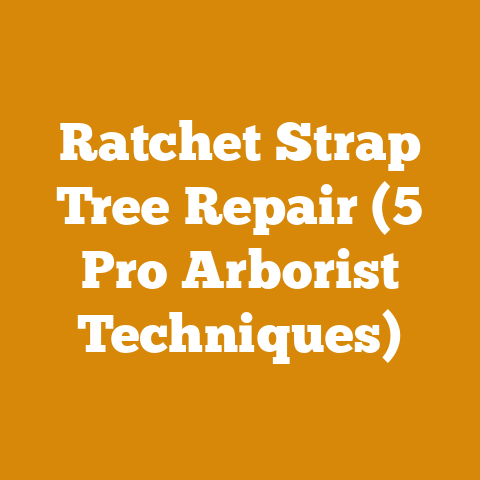What Insect Eats Wood and Leaves Sawdust? (5 Hidden Pests)
Having spent years in the wood processing industry, from felling trees in the dense forests to meticulously preparing firewood, I’ve seen firsthand the devastating impact of wood-boring insects. It’s a battle every woodworker and homeowner must face. Today, I’m going to share my knowledge on identifying those hidden pests that turn wood into sawdust and how to combat them.
What Insect Eats Wood and Leaves Sawdust? (5 Hidden Pests)
Discovering what insect is munching on your wood and leaving piles of sawdust is the first step toward protecting your valuable timber. Here are five common culprits that you need to know about.
1. Carpenter Ants: The Wood Excavators
Carpenter ants don’t actually eat wood. Instead, they excavate it to create nests, leaving behind coarse sawdust-like shavings. It’s crucial to differentiate them from termites, which consume the wood.
- Identification: Large, black ants that create smooth tunnels in wood. You’ll often find piles of coarse sawdust near their entry points.
- Damage: Structural damage to homes, decks, and other wooden structures.
- Control: Locate and eliminate the nest. Use insecticides specifically designed for carpenter ants. Prevention includes removing moisture sources and sealing entry points.
I remember one particularly challenging infestation in an old barn. The carpenter ants had completely hollowed out several support beams. It took weeks of careful treatment and structural repairs to restore the barn to its former glory. The key was finding the main nest, which was hidden inside a damp, rotting log nearby.
2. Termites: The Silent Destroyers
Termites are notorious for their ability to consume wood from the inside out, often going undetected until significant damage has occurred.
- Identification: Small, pale insects that live in colonies. They create mud tubes to travel from the soil to the wood.
- Damage: Extensive structural damage to buildings, often requiring costly repairs.
- Control: Professional termite treatment is usually necessary. This may involve soil treatment, baiting systems, or direct wood treatment.
I once consulted on a project where a homeowner discovered termite damage during a renovation. The termites had infested the wall studs, and the damage was so severe that a section of the wall had to be completely rebuilt. This highlights the importance of regular inspections, especially in areas prone to termite infestations.
3. Powderpost Beetles: The Fine Dust Producers
These beetles are named for the fine, powder-like sawdust they leave behind as they bore through wood. They often attack hardwoods like oak, ash, and hickory.
- Identification: Small, reddish-brown beetles. The sawdust they produce is very fine, almost like talcum powder.
- Damage: Damage to furniture, flooring, and wooden trim.
- Control: Surface treatments with insecticides can be effective for minor infestations. Fumigation may be necessary for severe cases.
One of the most common problems I see is powderpost beetle infestations in antique furniture. These beetles can slowly destroy valuable pieces if left unchecked. Regular inspection and prompt treatment are essential to preserve these items.
4. Woodboring Weevils: The Tunnel Makers
Woodboring weevils, also known as woodworms, are beetles that lay their eggs in cracks and crevices of wood. The larvae then bore into the wood, creating tunnels.
- Identification: Small, dark-colored beetles. They leave behind small, round exit holes in the wood.
- Damage: Damage to structural timbers, furniture, and wooden tools.
- Control: Insecticides can be used to treat infested wood. Replacing damaged wood may also be necessary.
I once had a client who found woodboring weevils in the handle of his favorite axe. The larvae had weakened the handle, making it unsafe to use. I helped him replace the handle and treated the surrounding wood to prevent further infestations.
5. Bark Beetles: The Tree Killers
While bark beetles primarily attack living trees, they can also infest freshly cut logs and firewood. They bore into the bark and wood, disrupting the tree’s ability to transport nutrients and water.
- Identification: Small, cylindrical beetles. They create intricate galleries under the bark of trees.
- Damage: Death of trees, damage to timber resources.
- Control: Preventative measures include maintaining tree health and removing infested trees. Insecticides may be used in some cases.
I’ve seen entire stands of trees decimated by bark beetle infestations. The key to controlling these pests is early detection and prompt action. This includes removing infested trees and implementing preventative measures to protect healthy trees.
Understanding the Science Behind Wood Consumption
To effectively combat these wood-boring insects, it’s crucial to understand the science behind how they consume and damage wood.
The Chemical Composition of Wood
Wood is primarily composed of cellulose, hemicellulose, and lignin. Cellulose provides strength and structure, while hemicellulose and lignin act as binding agents. Different insects target different components of wood.
- Cellulose: The main structural component of wood, targeted by termites and some beetles.
- Hemicellulose: A complex carbohydrate that is easier to digest than cellulose, often targeted by early-stage infestations.
- Lignin: A complex polymer that provides rigidity and resistance to decay. Some insects can break down lignin, but it’s generally more resistant to degradation.
Understanding the chemical composition of wood helps in selecting appropriate treatments and prevention methods. For example, treatments that target cellulose digestion can be highly effective against termites.
Insect Digestive Systems and Wood Degradation
Wood-boring insects have evolved specialized digestive systems that allow them to break down wood. Termites, for example, rely on symbiotic microorganisms in their gut to digest cellulose.
- Symbiotic Microorganisms: Termites and some beetles harbor bacteria, protozoa, or fungi that break down cellulose and other wood components.
- Enzymes: Some insects produce enzymes that directly degrade wood.
- Physical Degradation: Carpenter ants and other insects physically excavate wood without consuming it, creating nests and tunnels.
Knowing how insects digest wood helps in developing targeted control strategies. For example, some termite baits contain substances that disrupt the symbiotic microorganisms in their gut, leading to their death.
Identifying Insect Damage: A Step-by-Step Guide
Accurately identifying the type of insect damage is crucial for selecting the right treatment and prevention methods. Here’s a step-by-step guide.
Step 1: Inspect the Wood
Carefully examine the wood for signs of damage, such as holes, tunnels, or sawdust.
- Holes: Look for small, round holes (often associated with woodboring weevils) or larger, irregular holes (often associated with carpenter ants).
- Tunnels: Examine the wood for tunnels or galleries. Termite tunnels are often filled with mud, while carpenter ant tunnels are smooth and clean.
- Sawdust: Collect a sample of the sawdust and examine its texture and color. Fine, powder-like sawdust is often associated with powderpost beetles, while coarse sawdust is associated with carpenter ants.
Step 2: Identify the Insect
If possible, try to identify the insect itself. Look for live insects near the damaged wood or in the surrounding area.
- Ants: Carpenter ants are large and black, while termites are small and pale.
- Beetles: Woodboring weevils are small and dark-colored, while powderpost beetles are small and reddish-brown.
- Termites: Look for mud tubes leading from the soil to the wood.
Step 3: Assess the Extent of the Damage
Determine how widespread the damage is. This will help you decide on the appropriate treatment strategy.
- Minor Damage: Small, localized infestations can often be treated with surface insecticides or wood preservatives.
- Extensive Damage: Widespread infestations may require professional treatment, such as fumigation or soil treatment.
Step 4: Consult a Professional
If you’re unsure about the type of insect damage or the best course of treatment, consult a professional pest control company or a qualified woodworker.
I always recommend consulting with a professional for severe infestations. They have the expertise and equipment to effectively eliminate the pests and prevent further damage.
Prevention Strategies: Keeping Wood-Boring Insects at Bay
Prevention is always better than cure. Here are some strategies to keep wood-boring insects away from your wood.
1. Use Treated Wood
Treated wood is impregnated with chemicals that make it resistant to insect attack. This is a great option for outdoor projects.
- Pressure-Treated Wood: Wood that has been treated with preservatives under pressure, making it highly resistant to decay and insect attack.
- Borate-Treated Wood: Wood that has been treated with borate, a natural mineral that is toxic to insects but relatively harmless to humans and pets.
I always use pressure-treated wood for decks, fences, and other outdoor structures. It’s a worthwhile investment that can save you a lot of trouble in the long run.
2. Maintain Low Moisture Levels
Wood-boring insects are attracted to moist wood. Keeping wood dry can help prevent infestations.
- Proper Ventilation: Ensure that wooden structures are well-ventilated to prevent moisture buildup.
- Repair Leaks: Fix any leaks in roofs, pipes, or foundations to prevent water from entering the wood.
- Use Dehumidifiers: In damp environments, use dehumidifiers to reduce moisture levels in the air.
I’ve seen many infestations start in areas with poor ventilation and high moisture levels. Addressing these issues can significantly reduce the risk of insect damage.
3. Remove Food Sources
Remove potential food sources for wood-boring insects, such as dead trees, stumps, and decaying wood.
- Clear Debris: Remove any piles of wood debris from around your property.
- Prune Trees: Prune trees to remove dead or dying branches that could attract insects.
- Store Firewood Properly: Store firewood away from your house and off the ground to prevent it from becoming infested.
I always advise my clients to keep their yards clean and free of wood debris. This simple step can make a big difference in preventing insect infestations.
4. Apply Wood Preservatives
Wood preservatives can help protect wood from insect attack.
- Surface Treatments: Apply wood preservatives to the surface of the wood to create a barrier against insects.
- Penetrating Treatments: Use penetrating wood preservatives that soak into the wood, providing longer-lasting protection.
I recommend using wood preservatives on exposed wood surfaces, especially in areas prone to insect infestations.
5. Regular Inspections
Regularly inspect your wood structures for signs of insect damage. Early detection is key to preventing serious infestations.
- Annual Inspections: Conduct annual inspections of your home and other wooden structures.
- Professional Inspections: Consider hiring a professional pest control company to conduct a thorough inspection.
I always tell my clients that regular inspections are the best way to catch infestations early. The sooner you detect a problem, the easier it will be to solve.
Treatment Options: Eliminating Wood-Boring Insects
If you discover a wood-boring insect infestation, there are several treatment options available.
1. Insecticides
Insecticides can be used to kill wood-boring insects.
- Surface Sprays: Apply insecticide sprays to the surface of the wood to kill insects on contact.
- Boric Acid: Boric acid is a natural insecticide that is effective against many wood-boring insects.
- Fumigation: Fumigation involves sealing off the infested area and releasing a gas that kills the insects. This is usually done by a professional pest control company.
When using insecticides, always follow the manufacturer’s instructions carefully and take precautions to protect yourself and the environment.
2. Heat Treatment
Heat treatment involves raising the temperature of the infested wood to a level that kills the insects.
- Kiln Drying: Kiln drying is a common method of heat treating wood. The wood is placed in a kiln and heated to a temperature of 130-140°F for several hours.
- Heat Guns: Heat guns can be used to treat localized infestations. The heat gun is used to heat the infested area to a temperature of 120-130°F for several minutes.
Heat treatment is an effective and environmentally friendly way to kill wood-boring insects.
3. Wood Replacement
In cases of severe damage, it may be necessary to replace the infested wood.
- Remove Damaged Wood: Carefully remove the damaged wood and dispose of it properly.
- Replace with Treated Wood: Replace the damaged wood with treated wood to prevent future infestations.
I’ve had to replace entire sections of walls and floors due to severe insect damage. It’s a costly and time-consuming process, but it’s sometimes the only way to ensure the structural integrity of the building.
4. Biological Control
Biological control involves using natural enemies of wood-boring insects to control their populations.
- Parasitic Wasps: Parasitic wasps lay their eggs inside the larvae of wood-boring insects, killing them.
- Nematodes: Nematodes are microscopic worms that can kill wood-boring insects.
Biological control is a promising approach to controlling wood-boring insects, but it’s not always effective.
Case Studies: Real-World Examples of Insect Infestations
Here are a few case studies that illustrate the challenges of dealing with wood-boring insect infestations.
Case Study 1: The Carpenter Ant Infestation
A homeowner discovered carpenter ant damage in his deck. The ants had excavated tunnels in the support posts, weakening the structure.
- Diagnosis: Carpenter ant infestation.
- Treatment: The homeowner located and eliminated the nest. He then treated the deck with insecticide and replaced the damaged support posts.
- Outcome: The infestation was successfully eliminated, and the deck was restored to its original condition.
Case Study 2: The Termite Infestation
A business owner discovered termite damage in his office building. The termites had infested the wall studs and floor joists, causing significant structural damage.
- Diagnosis: Termite infestation.
- Treatment: The business owner hired a professional pest control company to treat the building with insecticide. The damaged wood was replaced, and the building was treated with a soil barrier to prevent future infestations.
- Outcome: The infestation was successfully eliminated, but the repairs were costly and time-consuming.
Case Study 3: The Powderpost Beetle Infestation
An antique collector discovered powderpost beetle damage in a valuable piece of furniture. The beetles had created numerous small holes in the wood.
- Diagnosis: Powderpost beetle infestation.
- Treatment: The collector treated the furniture with insecticide and sealed it in a plastic bag for several weeks. He then applied a wood preservative to protect the furniture from future infestations.
- Outcome: The infestation was successfully eliminated, and the furniture was saved.
Safety Precautions When Dealing with Wood-Boring Insects
When dealing with wood-boring insects, it’s important to take safety precautions to protect yourself and the environment.
1. Wear Protective Gear
When applying insecticides or handling infested wood, wear protective gear, such as gloves, goggles, and a respirator.
- Gloves: Wear chemical-resistant gloves to protect your skin from contact with insecticides.
- Goggles: Wear goggles to protect your eyes from splashes and fumes.
- Respirator: Wear a respirator to protect your lungs from inhaling insecticide fumes.
2. Follow Instructions Carefully
Always follow the manufacturer’s instructions when using insecticides or wood preservatives.
- Read the Label: Carefully read the label before using any product.
- Apply Correctly: Apply the product according to the instructions.
- Store Properly: Store the product in a safe place, away from children and pets.
3. Dispose of Waste Properly
Dispose of infested wood and insecticide containers properly.
- Check Local Regulations: Check your local regulations for proper disposal methods.
- Do Not Burn: Do not burn infested wood, as this can release harmful chemicals into the air.
4. Ventilate the Area
When applying insecticides or wood preservatives indoors, ventilate the area well.
- Open Windows: Open windows and doors to allow fresh air to circulate.
- Use Fans: Use fans to help circulate the air.
5. Keep Children and Pets Away
Keep children and pets away from treated areas until the product has dried or the fumes have dissipated.
- Block Access: Block access to treated areas to prevent children and pets from coming into contact with the product.
The Future of Wood Protection: Innovations and Research
The field of wood protection is constantly evolving, with new innovations and research aimed at developing more effective and environmentally friendly methods of controlling wood-boring insects.
1. Biopesticides
Biopesticides are pesticides derived from natural sources, such as bacteria, fungi, or plants. They are generally less toxic than synthetic pesticides and are less likely to harm the environment.
- Bacillus thuringiensis (Bt): A bacterium that produces a toxin that is lethal to certain insects.
- Neem Oil: An oil extracted from the neem tree that has insecticidal properties.
2. Nanotechnology
Nanotechnology involves the use of materials at the nanoscale to create new products and applications. Nanoparticles can be used to enhance the effectiveness of wood preservatives and insecticides.
- Nano-Copper: Copper nanoparticles can be used to protect wood from fungal decay and insect attack.
- Nano-Silica: Silica nanoparticles can be used to improve the penetration and durability of wood preservatives.
3. Genetic Engineering
Genetic engineering involves modifying the genes of trees to make them more resistant to insect attack.
- Insect-Resistant Trees: Researchers are developing trees that produce their own insecticides, making them resistant to certain insects.
4. Sustainable Forestry Practices
Sustainable forestry practices can help reduce the risk of insect infestations by promoting healthy forests.
- Selective Logging: Selective logging involves harvesting only mature trees, leaving the younger trees to grow. This helps maintain the health and diversity of the forest.
- Reforestation: Reforestation involves planting new trees to replace those that have been harvested. This helps maintain the forest’s ability to sequester carbon and provide habitat for wildlife.
Conclusion: Protecting Your Wood from Hidden Pests
Wood-boring insects can cause significant damage to wooden structures and valuable possessions. By understanding the types of insects that attack wood, identifying the signs of damage, and implementing prevention and treatment strategies, you can protect your wood from these hidden pests. Remember to always prioritize safety and consult with professionals when necessary. With vigilance and proactive measures, you can ensure the longevity and beauty of your wood for years to come.






